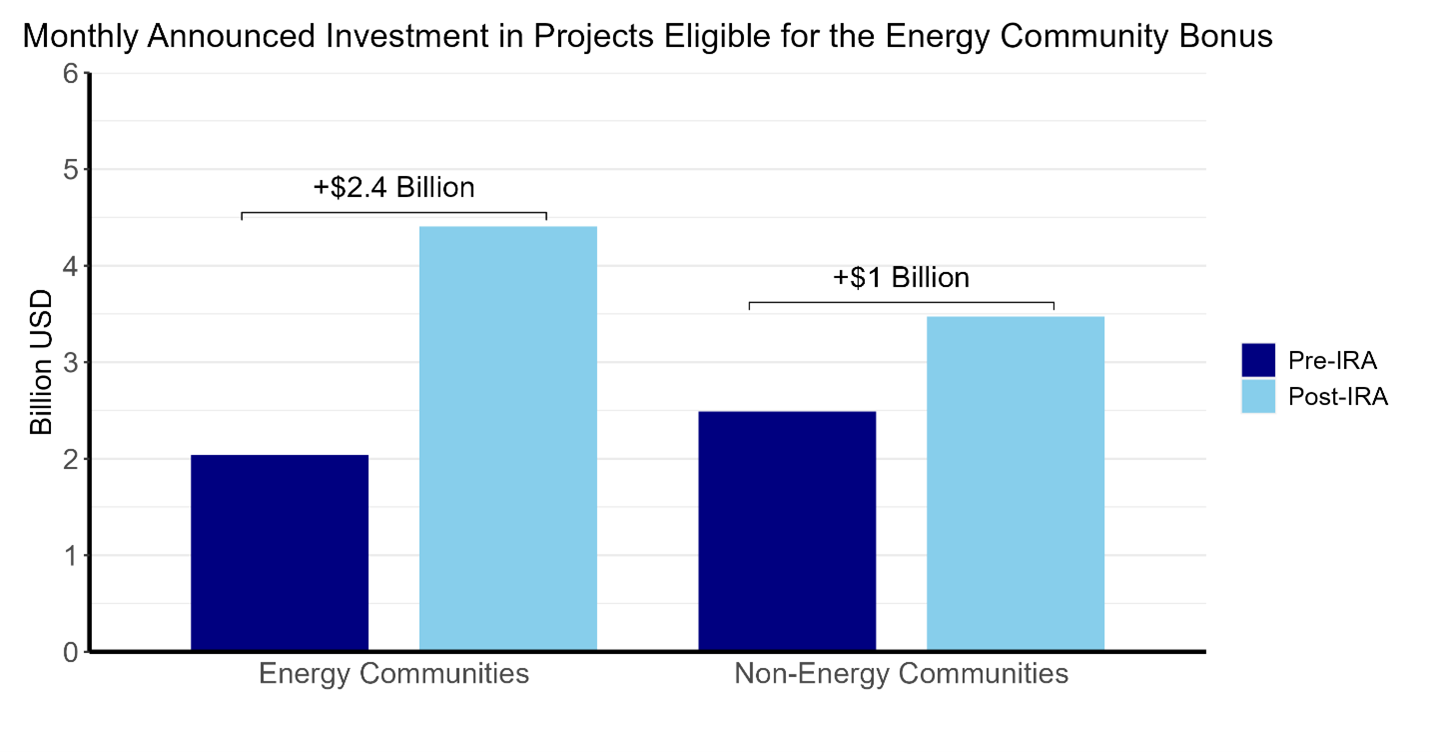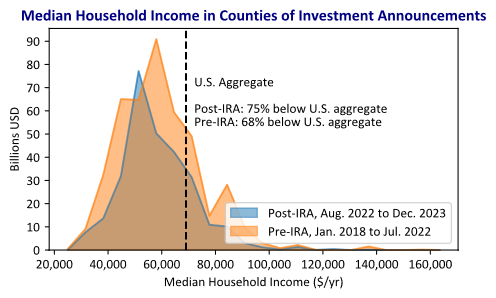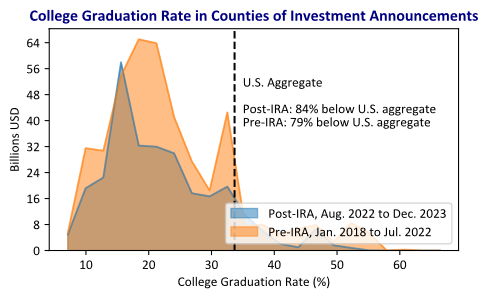
Q3-Q4 2023 Updates: Inflation Reduction Act Analysis
TL/DR –
The Inflation Reduction Act (IRA) has incentivized clean investments in disadvantaged communities, according to new data from the Massachusetts Institute of Technology and Rhodium Group Clean Investment Monitor. After the IRA was passed in August 2022, investment in clean electricity in these areas increased from an average of $2 billion per month to nearly $4.5 billion per month. Furthermore, the data shows that 75% of announced clean investments have been in counties with median incomes below the U.S. aggregate median while 84% of announced clean investments have been in counties with college graduation rates below the U.S. aggregate rate, suggesting a positive effect on disadvantaged communities.
Clean investments encouraged by the Inflation Reduction Act (IRA) are benefiting disadvantaged communities, including areas with low incomes, low educational attainments, high unemployment rates, and Energy Communities. This is further confirmed with the latest data from the Massachusetts Institute of Technology and Rhodium Group Clean Investment Monitor (CIM).
Boosting Clean Energy Growth in Energy Communities
Energy Communities, as defined by IRA, are areas historically reliant on fossil fuels for employment, wages, or tax revenue. The Energy Community Bonus provides extra tax credit to clean electricity investment and production in those locations. Before the IRA enactment in August 2022, about $2 billion per month of clean electricity investment was announced in areas eligible for the Energy Community Bonus. After the IRA’s passage, these numbers escalated to nearly $4.5 billion per month, indicating significant growth in clean investment in Energy Communities.

Investment Flow towards Disadvantaged Communities
IRA clean investments are also benefiting disadvantaged communities at large. Pre-IRA, 68% of announced investments in clean technologies were in counties with median incomes below the U.S. average. Post-IRA, 75% of these investments have been made in such counties.

Regarding education, 79% of announced clean investments were in counties with college graduation rates below the U.S. average before the IRA. This percentage has risen to 84% post-IRA. Thus, clean investments are particularly concentrated in areas with low incomes and educational attainments.

—
Read More US Economic News
